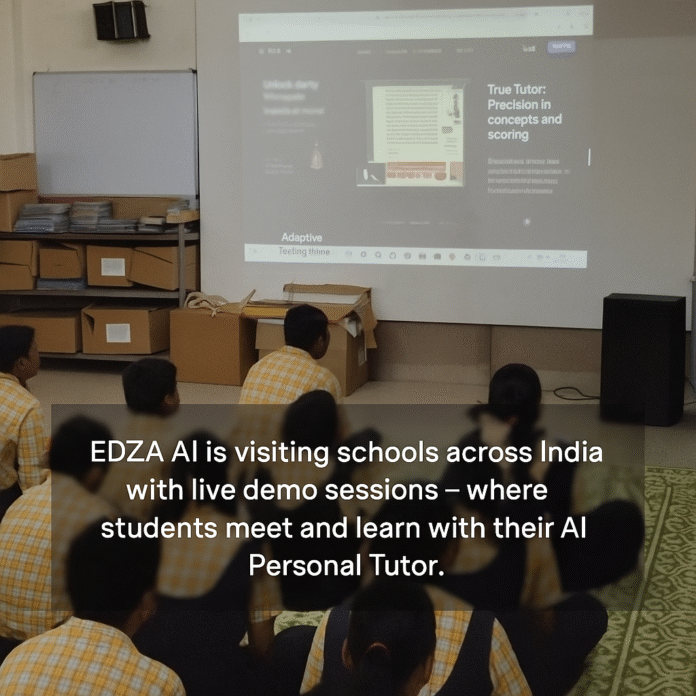In India’s high-stakes exam environment, a familiar pattern repeats itself: students avoid taking tests until the syllabus is “finished.” The reason is most tests are static, designed to assess the whole curriculum rather than address a student’s immediate weak spots. For slow learners, this means sitting in silence during questions they haven’t yet covered. For fast learners, it often means slogging through sections they’ve already mastered.
This is where the value of a skilled home tutor becomes clear. A good tutor can design an adaptive test based on what the student has learned this week, not just what the syllabus demands on paper. They can spot a recurring error in algebra or a shaky grasp of a history chapter, and shape practice around that gap before moving on. But in today’s Indian education economy, this level of personalised attention comes at a price, often beyond the reach of most families. Even for those who can afford it, private tuition is usually capped at a few hours a week, limiting its impact.
The Livestream Limitation
In the meantime, much of the EdTech industry has embraced large-scale livestreams as its primary teaching mode. A single teacher may address a thousand students at once, running through a fixed lesson plan while questions pile up unseen in muted chats. There is little scope for adapting to different paces of learning, the class moves forward whether everyone has grasped the concept or not.
For students who learn more slowly, this model can be punishing. They may fall behind early and find it nearly impossible to catch up. Faster learners, on the other hand, often end up disengaged, waiting for the class to cover material they mastered weeks earlier.
Learning by Doing, Together
Educational researchers have long noted the benefits of experiential learning, the process of learning by actively engaging with problems rather than passively absorbing information. In human tutoring, this often takes the form of co-solving: working through problems together, step by step, with the tutor guiding and correcting in real time.
Some AI-based tutoring systems are now beginning to replicate this approach. On a shared digital whiteboard, students and tutor can tackle the same problem line by line. The AI can adjust explanations based on the pace at which the student is solving, whether they need repeated reinforcement of a basic concept or are ready to leap ahead to more advanced material.
Bringing Adaptive Testing to Scale
One of the most promising shifts is the integration of spaced learning and adaptive testing into AI tutoring. Instead of waiting for the syllabus to finish, the system can generate short, targeted tests based on the learner’s current understanding. If a student struggles with a concept today, it can reappear, in a different form, a few days later, ensuring the gap is closed before it becomes entrenched.
Edza AI [Indian AI Personal Tutor], for example, uses its memory of a student’s past sessions to design these tests dynamically. If a learner repeatedly makes calculation errors in physics numericals, the next session might start with a short problem set on that specific skill. If they’ve already shown mastery in a topic, the AI moves on rather than forcing repetitive revision. From August 15, 2025, Edza AI is opening its personalised tutoring model to Class 11 and 12 students across multiple boards.
Private-Tutor Precision Without Private-Tutor Limits
The advantage is not just in accuracy, but in accessibility. While private tutors can offer similar adaptive approaches, their availability is limited by geography, cost, and time. AI tutors can, provide the same personalisation to thousands of students simultaneously without session caps or price points that lock out most families.
For many, this could mean having the benefits of a personal tutor — targeted tests, interactive co-solving, pacing that matches their ability without the trade-offs of the livestream model or the financial strain of home tuition.
The Larger Question for Indian EdTech
As the country debates the future of education, the real challenge is no longer whether digital platforms can reach students, but whether they can engage them as effectively as an in-person tutor. Adaptive, interactive tools may be the bridge combining the personalised pace and feedback of home tuition with the reach of technology.
If these systems can deliver true one-on-one attention at scale, India’s students might finally get something the current mix of livestreams, pre-recorded videos, and generic tests still can’t provide: learning that moves with them, not ahead of them or behind them.
#EdzaAI #1on1Tutoring #Hacktivspace #MakeInIndia #AIForEducation

Why Adaptive, Interactive Learning Still Eludes Most Indian Students — And How AI Is Closing the Gap
-


